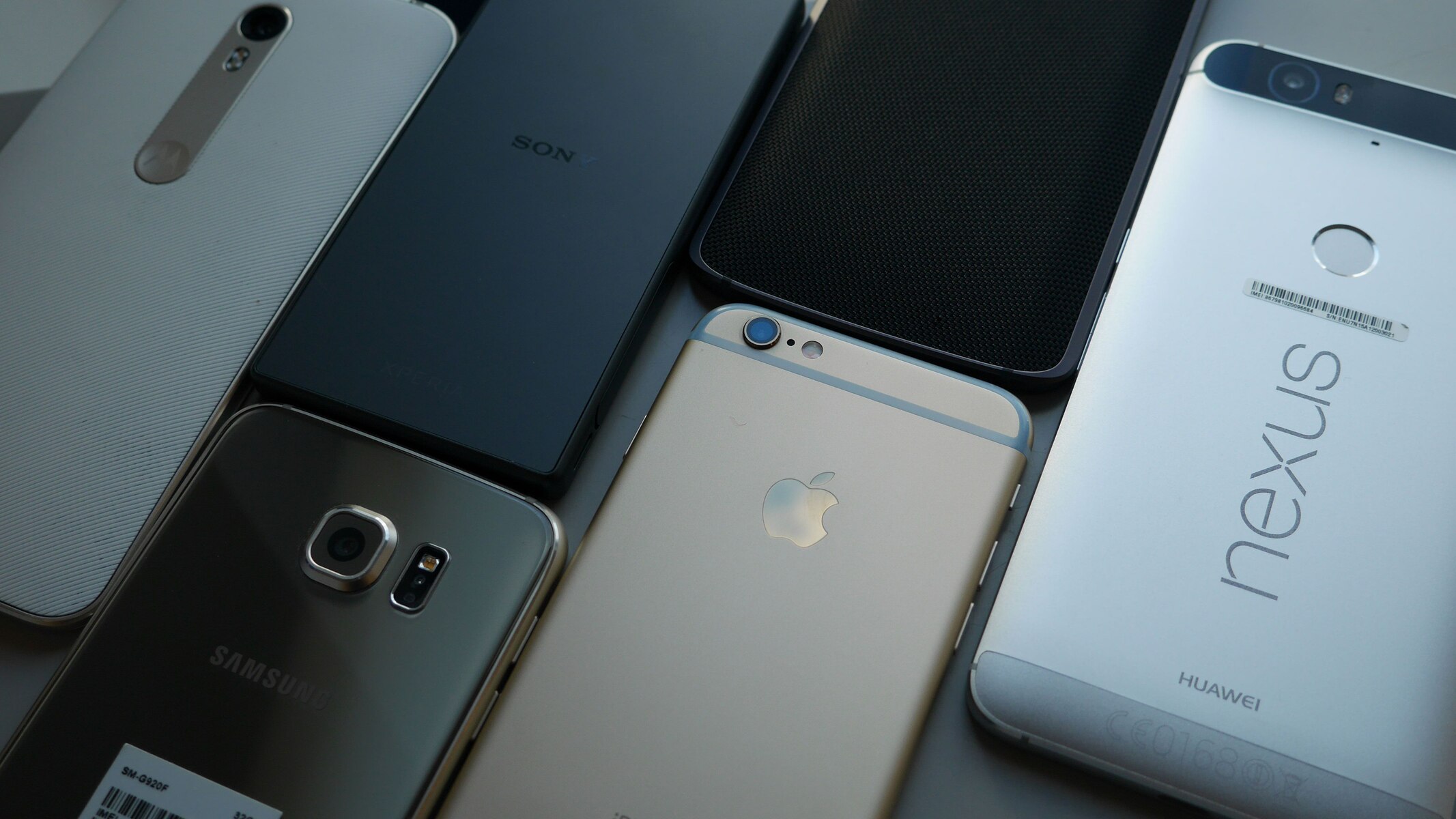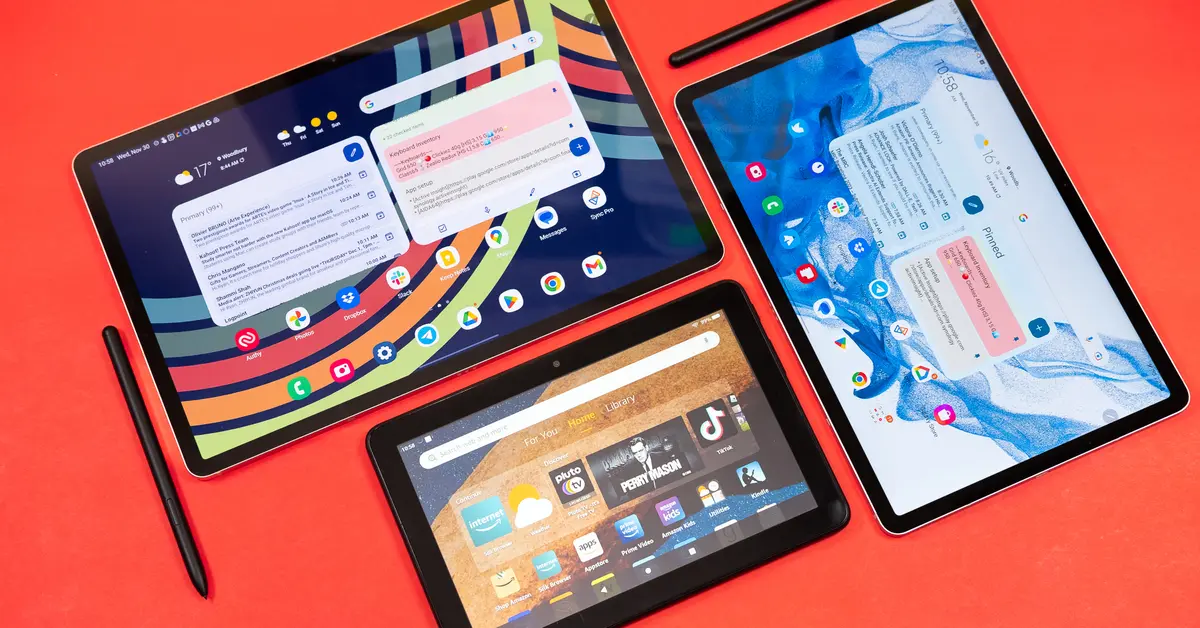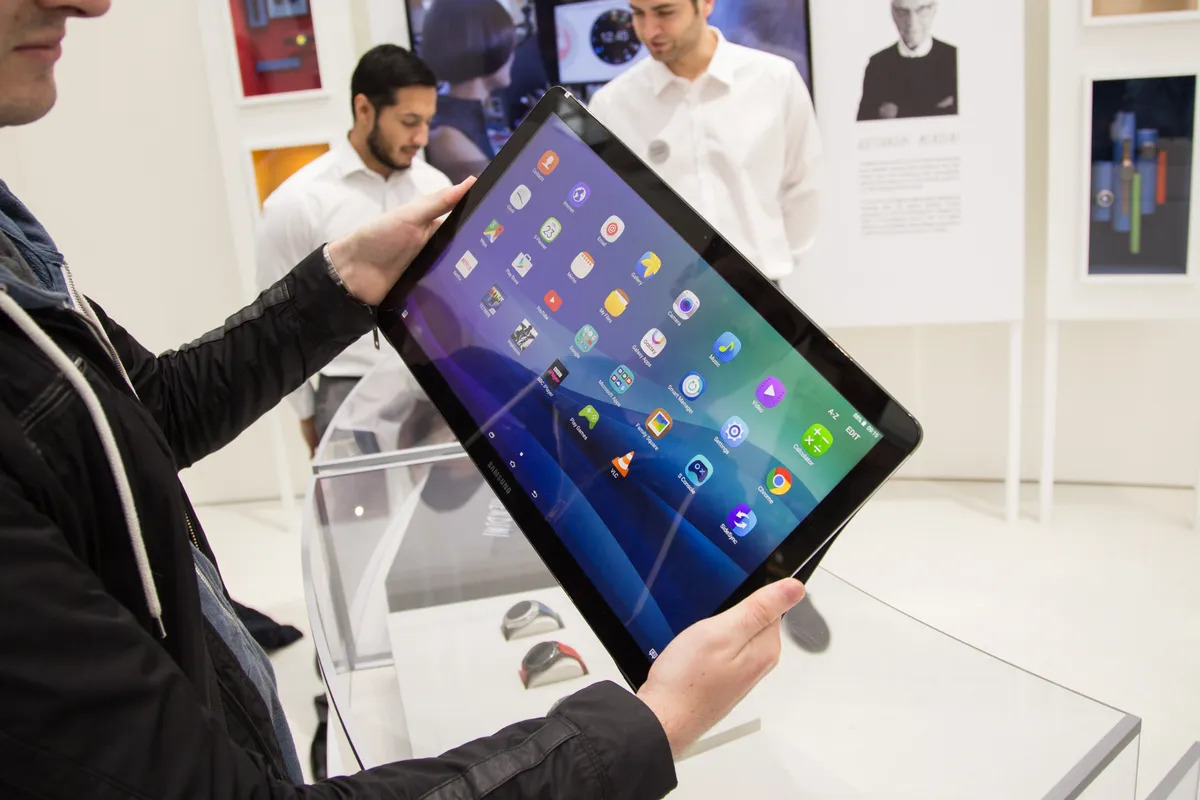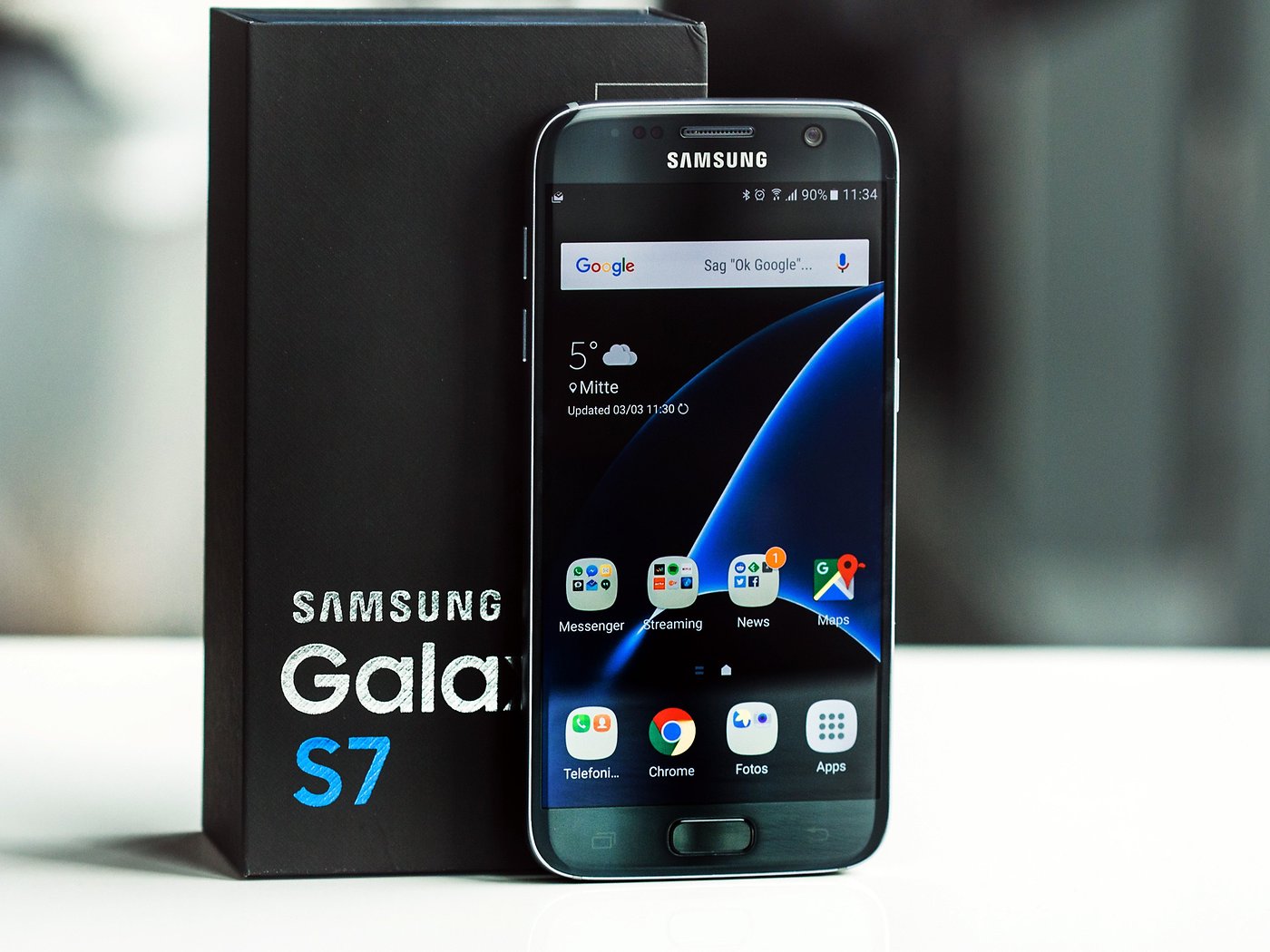Introduction
Welcome to this article, where we’ll be diving into the fascinating world of Samsung Galaxy S7 and exploring an important aspect of its specifications: the RAM size. If you’re a smartphone enthusiast or considering purchasing this device, understanding its RAM capacity is crucial for making an informed decision.
The Samsung Galaxy S7, released in 2016, is a flagship smartphone renowned for its impressive features and sleek design. While it may not be the latest model on the market, it still holds its own against modern devices. With its powerful hardware and user-friendly interface, the Galaxy S7 continues to be a popular choice among tech-savvy individuals.
One of the key elements that contribute to the overall performance of the Galaxy S7 is its RAM, which stands for Random Access Memory. RAM is the temporary storage space where the device holds data that is actively being used by the system and apps. Having an adequate amount of RAM is crucial for smooth multitasking, faster app loading times, and overall device responsiveness.
The Samsung Galaxy S7 boasts a RAM size of 4GB, which was considered top-of-the-line during its release. With 4GB of RAM, the device has sufficient memory to handle intensive tasks, such as running multiple apps simultaneously or playing graphics-intensive games. This generous amount of RAM helps ensure that the Galaxy S7 retains its snappiness despite the passage of time.
As we delve deeper into this article, we’ll not only explore the importance of RAM in a smartphone but also discuss the advantages of having a higher RAM size. Additionally, we’ll compare the Galaxy S7’s RAM with other flagship phones of its time and touch upon the RAM management strategies employed by Samsung in this device. Lastly, we’ll provide some valuable tips for optimizing RAM usage on your Galaxy S7.
So, if you’re ready to unravel the mysteries of RAM on the Samsung Galaxy S7, let’s dive in and explore the fascinating world of memory management in this remarkable device.
RAM Size of Samsung Galaxy S7
The Samsung Galaxy S7 comes equipped with a generous 4GB of RAM. This was a significant upgrade from its predecessor, the Galaxy S6, which only had 3GB of RAM. The increase in RAM size is a testament to Samsung’s commitment to providing users with a seamless and responsive experience.
With 4GB of RAM, the Galaxy S7 is well-equipped to handle the demands of modern-day smartphone usage. Whether you’re browsing the web, streaming videos, playing games, or multitasking between various apps, the ample RAM ensures that the device can smoothly handle these tasks without any lag or slowdown.
The larger RAM size allows for improved multitasking capabilities, enabling users to switch between apps effortlessly. You can have multiple applications running in the background while maintaining the smooth functionality of the foreground app. This means you can seamlessly switch from texting a friend to checking emails or scrolling through social media without any noticeable delays.
In addition to supporting seamless multitasking, the 4GB of RAM in the Galaxy S7 also contributes to faster app loading times. When you open an app, it gets loaded into the RAM, allowing for quicker access to the app’s data and resources. This results in a smoother and more responsive experience, making it easier to navigate through various apps and perform tasks efficiently.
Furthermore, the larger RAM size is especially advantageous for gaming enthusiasts. Gaming on the Galaxy S7 is a delight, thanks to the ample RAM that ensures smooth gameplay and prevents any stutters or lags. With 4GB of RAM, you can enjoy graphically intense games without compromising on performance.
It’s worth noting that while 4GB of RAM was considered a top-tier specification at the time of the Galaxy S7’s release, newer smartphones have surpassed this threshold. However, this doesn’t diminish the fact that the Galaxy S7’s RAM size is still more than capable of supporting a wide range of tasks and providing a satisfactory user experience.
In the next sections, we’ll explore the importance of RAM in a smartphone and the performance enhancements that come with higher RAM sizes. So, let’s continue our journey into the world of RAM and unravel the secrets behind its significance in the smartphone realm.
Importance of RAM in a Smartphone
RAM, or Random Access Memory, is a crucial component in any smartphone, including the Samsung Galaxy S7. It plays a vital role in determining the device’s performance and user experience. Let’s explore why RAM is essential in a smartphone and how it contributes to the overall functionality.
One of the primary functions of RAM is to provide temporary storage for data that is actively being used by the device’s operating system and applications. It allows for quick access to this data, enabling smooth multitasking and faster app loading times. Without sufficient RAM, a smartphone may struggle to run multiple apps simultaneously, resulting in sluggish performance and delayed responsiveness.
RAM acts as a bridge between the device’s storage (such as internal memory or an SD card) and the processor. When you open an app, it gets loaded into the RAM, ensuring that the necessary resources and data are readily available for the app to run smoothly. The more RAM a smartphone has, the more apps and processes it can handle simultaneously without experiencing slowdowns or crashes.
In addition to multitasking capabilities, RAM also plays a crucial role in gaming performance. Modern mobile games are becoming increasingly complex, requiring more resources to deliver immersive graphics and smooth gameplay. With higher RAM capacity, a smartphone can store and retrieve game assets quickly, reducing loading times and ensuring a seamless gaming experience.
RAM also plays a pivotal role in optimizing the overall user experience. It allows applications to remain open in the background, reducing the need to reload the app when switching back to it. This translates to faster app switching and a seamless user interface. Furthermore, having ample RAM helps reduce the likelihood of apps being forcibly closed by the operating system due to memory constraints, ensuring a consistent and uninterrupted user experience.
RAM size is particularly important for power users who engage in resource-intensive activities such as video editing, graphic design, or running virtual machines on their smartphones. These activities place a heavy demand on the device’s resources, and having a higher RAM capacity allows for smoother and more efficient execution of such tasks.
While a larger RAM size is desirable, it’s important to strike a balance based on personal usage patterns. Overspending on excessive RAM might not offer significant advantages for casual users, while power users might benefit from a larger RAM capacity. As technology continues to advance, smartphone manufacturers are constantly improving RAM management techniques to deliver optimal performance with the available resources.
In the next section, we’ll explore the performance enhancements that come with higher RAM sizes and compare the Galaxy S7’s RAM with other flagship phones of its time. Join us as we unravel the impact of RAM on smartphone performance and delve deeper into the world of memory management.
Performance Enhancements with Higher RAM
Having a higher RAM size in a smartphone, such as the Samsung Galaxy S7 with its 4GB RAM, offers several performance benefits. Let’s explore how an increased RAM capacity contributes to a better user experience and enhances the overall functionality of the device.
One of the primary advantages of higher RAM is improved multitasking capabilities. With more RAM, a smartphone can handle a greater number of apps running simultaneously in the background without experiencing performance degradation. This means you can switch between apps effortlessly, whether it’s browsing the web, replying to emails, or using social media, without any noticeable lag or slowdown.
In addition to multitasking, a larger RAM size enables faster app loading times. When an app is opened, it gets loaded into the RAM for quick access to its resources and data. With more RAM available, the device can store and retrieve the necessary app data more quickly, resulting in snappier app launches and smoother navigation within the app.
Gaming enthusiasts will appreciate the performance enhancements offered by higher RAM sizes. Mobile games are becoming increasingly demanding, requiring more resources to deliver stunning graphics and immersive gameplay. With a larger RAM capacity, a smartphone can load and store game assets more efficiently, reducing loading times and ensuring a seamless gaming experience without any stutters or lags.
Furthermore, having ample RAM allows for better overall system performance and responsiveness. As more apps are installed and used on a smartphone, they consume RAM, which can lead to performance bottlenecks if the available memory is insufficient. With a higher RAM capacity, the device can handle the memory demands of multiple apps more effectively, reducing the likelihood of slowdowns or crashes.
Another notable benefit of higher RAM is improved web browsing experience. With more RAM, a smartphone can store website data in memory, allowing for quicker page rendering and smoother scrolling. This results in a faster and more enjoyable web browsing experience, particularly for websites with rich media content or complex layouts.
While higher RAM sizes offer significant performance enhancements, it’s important to note that they are not the sole determinant of a smartphone’s overall performance. Other factors such as the processor, software optimization, and storage read/write speeds also play vital roles. It’s the synergy between these components that contributes to a seamless and responsive user experience.
Now that we’ve explored the performance benefits of higher RAM sizes, let’s compare the RAM capacity of the Samsung Galaxy S7 with other flagship phones of its time. Join us in the next section as we delve into the RAM specifications and see how the Galaxy S7 fares in comparison to its competitors.
Comparison with Other Flagship Phones
When it comes to RAM size, the Samsung Galaxy S7, with its 4GB RAM, was considered highly competitive when it was released in 2016. Let’s compare the RAM capacity of the Galaxy S7 with other flagship phones of its time to gain a better understanding of its position in the market.
At the time of its release, the Galaxy S7’s 4GB RAM was on par with other top-tier smartphones. For instance, the iPhone 6s, which was released around the same period, also featured 2GB of RAM. The Google Pixel, released in 2016, offered 4GB RAM as well, placing it in line with the Galaxy S7.
However, it’s worth noting that the RAM sizes in flagship smartphones have increased significantly since then. In the present day, it’s not uncommon to find smartphones with 6GB, 8GB, or even 12GB of RAM. These higher RAM capacities are often found in newer flagship models that target power users or individuals with demanding requirements.
While the Galaxy S7’s RAM size may seem modest compared to current standards, it still offers ample memory to handle everyday tasks and multitasking with ease. The optimization and efficient memory management techniques employed by Samsung in the Galaxy S7 ensure that the available RAM is utilized optimally, enhancing the overall performance of the device.
Furthermore, it’s important to consider that RAM is just one aspect of a smartphone’s performance. Factors such as the processor, software optimization, and storage speed also play significant roles in determining a device’s overall speed and responsiveness. The Galaxy S7, equipped with a capable Exynos 8890 processor and Samsung’s TouchWiz interface, delivers a smooth and satisfying user experience despite its RAM size.
Ultimately, the RAM capacity of the Galaxy S7, while not as high as current flagship models, is still more than sufficient for most users’ needs. For individuals who prioritize snappy multitasking, fast app loading times, and smooth gaming performance, the 4GB RAM in the Galaxy S7 delivers a satisfactory user experience.
In the next sections, we’ll explore the RAM management strategies employed by Samsung in the Galaxy S7 and provide some valuable tips to optimize RAM usage on your device. Join us as we uncover the secrets behind the efficient memory management of the Galaxy S7.
RAM Management in Samsung Galaxy S7
The Samsung Galaxy S7 is equipped with efficient RAM management techniques that help optimize the available memory and ensure smooth performance. Let’s explore how Samsung manages RAM in the Galaxy S7 to provide users with an optimized user experience.
One of the key features of Samsung’s RAM management strategy is the utilization of an adaptive memory system. This system dynamically allocates memory resources based on the user’s usage patterns and preferences. By analyzing which apps are frequently used and prioritizing them in RAM, the Galaxy S7 ensures that commonly accessed apps load quickly and remain responsive.
The Galaxy S7 also employs an intelligent task manager that automatically clears background processes and cached data to free up memory. This helps prevent excessive memory usage and ensures that the available RAM is utilized efficiently. By closing unused apps and processes, the device can allocate more resources to the active tasks, resulting in improved performance and responsiveness.
In addition to automatic memory management, the Galaxy S7 provides users with manual control over their device’s RAM usage. The device allows users to view the RAM usage statistics and provides options to manually close running apps or clear cached data. This gives users greater control over the memory allocation, enabling them to optimize RAM usage based on their specific requirements.
Furthermore, the Galaxy S7 incorporates advanced memory compression technology. This technology compresses idle app data in RAM, reducing the memory footprint and freeing up space for other processes. This results in a more efficient usage of the available RAM, allowing for improved multitasking and faster app switching.
It’s important to note that while the Galaxy S7’s RAM management is designed to optimize performance, certain factors, such as the number and complexity of apps running in the background, can impact memory usage. Running multiple resource-intensive apps simultaneously or installing excessive apps can lead to increased RAM usage and potential slowdowns. However, in most cases, the Galaxy S7 effectively manages available memory to provide a seamless user experience.
Now that we’ve explored the RAM management strategies implemented in the Galaxy S7, let’s delve into some tips and tricks to optimize RAM usage on your device. These techniques will help you make the most of the available memory and ensure optimal performance. Join us in the next section as we uncover the secrets to optimizing RAM usage on the Samsung Galaxy S7.
Tips to Optimize RAM Usage on Samsung Galaxy S7
The Samsung Galaxy S7 employs effective RAM management techniques to optimize performance. However, there are several steps you can take to further optimize RAM usage on your device. Let’s explore some useful tips and tricks to maximize the available memory and ensure optimal performance on your Samsung Galaxy S7.
- Close unused apps: Keeping multiple apps running in the background can consume valuable RAM. Close apps that you’re not actively using to free up memory resources.
- Clear app cache: Cached data can accumulate over time and consume valuable RAM. Go to Settings > Apps and select individual apps to clear their cached data. This can help free up memory and improve performance.
- Disable unnecessary pre-installed apps: Some pre-installed apps may run in the background, occupying RAM. Disable or uninstall apps that you don’t use to free up memory and reduce resource consumption.
- Limit background processes: The Galaxy S7 allows you to limit the number of background processes running concurrently. Go to Settings > Developer Options and select “Limit background processes” to set a lower limit, which can help conserve memory.
- Use Lite versions of apps: Many popular apps offer Lite versions that consume less memory and resources. Consider using Lite versions whenever available to minimize RAM usage.
- Keep software updated: Samsung periodically releases software updates that include performance optimizations. Keeping your device up to date ensures you benefit from the latest improvements in RAM management and overall performance.
- Avoid live wallpapers and widgets: Live wallpapers and widgets constantly run in the background, consuming memory and CPU resources. Use static wallpapers and limit the number of widgets to conserve RAM.
- Minimize animations: Reducing or disabling system animations can help improve overall device performance and RAM utilization. Go to Settings > Developer Options and select “Window animation scale,” “Transition animation scale,” and “Animator duration scale” to adjust or disable animations.
- Clear recent apps: Use the recent apps menu to clear the list of recently used apps periodically. This ensures that fewer apps are stored in RAM, freeing up memory for other tasks.
- Avoid running resource-intensive tasks simultaneously: Running multiple resource-intensive tasks, such as gaming and video streaming, concurrently can result in increased RAM usage. Try to avoid simultaneous resource-intensive processes to maintain optimal performance.
By following these tips, you can optimize the RAM usage on your Samsung Galaxy S7 and ensure a smooth and responsive user experience. Remember that managing RAM is a balance between optimizing performance and having enough resources available for the tasks you need to accomplish.
Now that you’re equipped with these valuable tips, go ahead and fine-tune your RAM usage on your Samsung Galaxy S7 to unleash its full potential. Enjoy a snappy and efficient smartphone experience!
Conclusion
In conclusion, the Samsung Galaxy S7’s 4GB RAM size offers a solid foundation for a smooth and responsive user experience. While newer flagship smartphones have surpassed this RAM capacity, the Galaxy S7 still holds its own and provides ample memory for everyday tasks, multitasking, and gaming.
We explored the importance of RAM in a smartphone and how it contributes to performance enhancements such as multitasking, faster app loading times, and gaming. Additionally, we compared the Galaxy S7’s RAM size with other flagship phones of its time, highlighting its competitive position in the market.
The RAM management in the Samsung Galaxy S7 showcases Samsung’s commitment to optimizing performance. With adaptive memory systems, intelligent task managers, and advanced memory compression technologies, the Galaxy S7 efficiently utilizes available RAM and delivers a seamless user experience.
We also provided valuable tips to optimize RAM usage on your Galaxy S7, including closing unused apps, clearing app cache, disabling unnecessary pre-installed apps, and limiting background processes. By implementing these tips, you can further maximize the available memory and ensure optimal device performance.
As you continue to enjoy your Samsung Galaxy S7, it’s important to consider that RAM is just one aspect of a smartphone’s performance. The device’s processor, software optimization, and storage speed also play significant roles in determining overall speed and responsiveness.
Whether you’re a casual smartphone user or a power user with demanding requirements, the Samsung Galaxy S7’s RAM size caters to a wide range of needs and provides a satisfactory user experience.
So, take advantage of the Galaxy S7’s impressive specifications, including its 4GB RAM, to enjoy seamless multitasking, faster app loading times, and a smooth gaming experience. By optimizing RAM usage and leveraging the capabilities of this remarkable device, you’re sure to have a stellar smartphone experience.

























